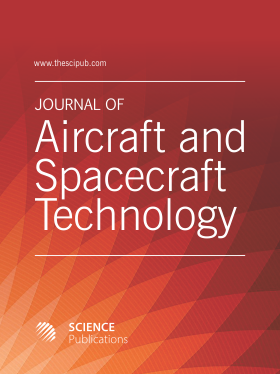The Modern Flight
- 1 Bucharest Polytechnic University, Romania
- 2 Second University of Naples, Italy
Abstract
A modern flight involves both a great flight quality and high safety throughout. You can’t speak of a quality of flight today unless it provides increased comfort to all passengers in full safety and relaxation. Regardless of the aircraft design type, a minimum level of comfort is required in the passenger cabin so that they feel safe, comfortable, quiet, plus not having the time to get bored if the flight is longer, but to keep constant the sensation of pleasure. For longer journeys, passengers must have the feeling of a vacation and not of a travel that doesn't over. Today, modern ships struggle to provide passengers with extra comfort, who no longer have to look on the walls or on a possible common screen that diffuses a movie that is known or not interesting for passengers as being a bad movie of a bad cinema. Every passenger must have his own laptop, which he can work on, navigate, communicate, or watch a pleasant, personally chosen film so that time passes easily and quickly and the journey being one as special as possible. Another aspect of a successful journey is to ensure increased safety throughout it. This is not easy to accomplish, especially in modern, complicated times, with all sorts of dangers that can occur during a flight. Nor is the fact that the ship is giant, full of people, workers, supervisors, can not completely eliminate all the dangers of a possible terrorist attack on board or from outside the ship, the dangers of air voids, globular lightning, frost, birds, a completely free route ... A large mass of specialists is constantly working to solve these problems. The propulsion system of the ship and its maintenance in the air, are, in the opinion of the authors of this paper, the two essential factors of ensuring one safer flight. For this reason, the paper will focus on the modern propulsion systems of an aircraft and in the most normal way of keeping it in the air. The safest way to keep an airplane in the air known from the oldest to the present day is the use of a navigable airship. On such a flying device, which automatically keeps everything in the air, without the danger of collapsing, with minimal fuel and energy consumption, with great flight safety and high comfort, it is only the problem of the maximum speed of navigation, which may be limited by the high resistance of the aircraft to advance. When we have a pleasure trip, or one on short or medium distances, navigating with airships is always preferred. What can be done when the journey takes place over very long distances and travelers are rushed to arrive at the destination, with the high speed of the aircraft being a priority? At first glance, in such cases, an airship can no longer be used. And yet a modifiable one could be used successfully and in such situations. This is an essential point to be discussed during this work.
DOI: https://doi.org/10.3844/jastsp.2017.224.233

- 6,400 Views
- 4,502 Downloads
- 9 Citations
Download
Keywords
- Modern Flight
- Flight Quality
- High Safety
- Some Special Aircraf
- Helicopters
- Aerospace
- Spacecraft Propulsion
- US Army
- Jet Engines
- Airships
